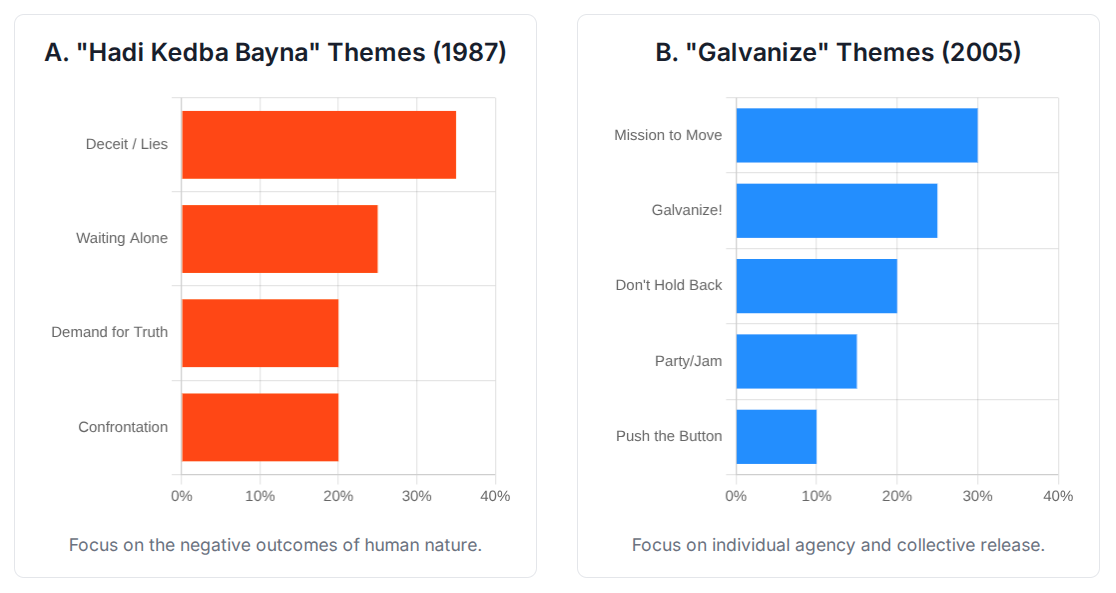The Chemical Brothers’ “Galvanize” (2005) contains a hypnotic Eastern-inspired string loop which defines the Big Beat sound. The origins of this famous musical motif involved unexpected coincidence, cultural musical adaptation and legal disputes which transformed the song’s core essence.
The producers Tom Rowlands and Ed Simons searched for their new track’s sonic hook through sources which extended beyond their typical UK club music exploration. The powerful rhythmic vocals of Moroccan singer Najat Aatabou led them to discover her song about betrayal which would become a worldwide anthem of empowerment.
The main musical element in “Galvanize” originates from Najat Aatabou’s 1992 song “Hadi Kedba Bayna” which translates to “This Lie is Obvious” or “Just Tell Me The Truth.” Through her music Najat Aatabou established herself as a main figure in Moroccan folk music by sharing powerful stories about the social and domestic challenges women face in Moroccan society.
The song presents an authentic emotional confrontation between a woman who confronts her cheating husband while asking him to tell the truth. The musical motif generates a tense circular pattern which expresses the feeling of being trapped by deception.
The Chemical Brothers used the sample to extract its musical elements but not its original message. The producers discovered an energetic and complex musical pattern which they could use to build their electronic track. The studio processing of the sample removed its original context to reveal its basic energetic properties. They initially stated they had obtained permission for the sample but subsequent reports indicated that the situation evolved into a formal copyright dispute. The legal process resulted in Najat Aatabou receiving co-writing credits for “Galvanize” together with Ed Simons and Tom Rowlands plus Q-Tip. The recognition of her essential work led to performance and royalty payments from worldwide sales and established proper ownership rights.
The song’s original message seeks to reveal deception yet the sampled version in “Galvanize” motivates listeners to break free from their personal barriers. I think it’s interesting to see how an artist’s original message does not determine the final interpretation of their work. The Chemical Brothers extracted the musical elements from Aatabou’s work but discarded the emotional and social content which made up the original song. They found value in the rhythmic elements and tonal characteristics of the sample. A curiosity between a woman seeking truth and a DJ seeking action.

The musical riff “Hadi Kedba Bayna” followed an unexpected path. It began as protest, was reborn as anthem, and now again it sells Michelin tires. That’s cultural translation in its purest form: emotion in, friction out.



